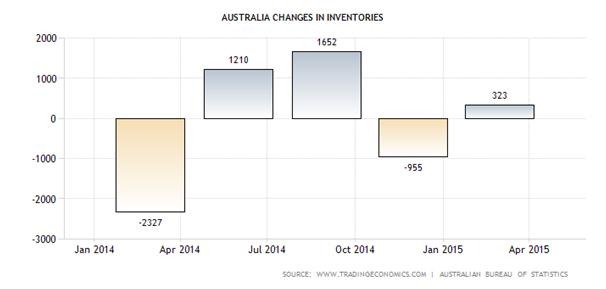The Australian Dollar has found adversity as the domestic economy faces a significant rout in the price of commodities. However, according to the statements released by the RBA, the weaker AUD is supporting the transition away from mining investment.
The release of the central banks latest monetary policy committee minutes seems to have confirmed what many had suspected, that further accommodative monetary policy is likely on its way. It is clear from some recent data points that economic activity has ticked up slightly in recent months; however, much of the increase is likely down to the lower AUD acting as a stimulus upon exports.
The transition towards non-mining related industries is a welcome development for the ailing economy but the process is likely to be gradual and still fraught with risk. It would appear that part of the RBA’s plan is an expectation that the U.S Fed’s rate rise will depreciate the AUD without the need to alter their interest rate regime.
This is highly likely to be the reason that RBA Governor, Glenn Stevens, has recently been seen to jawbone over the need for immediate action. However, the odds of a U.S. rate rise might have reduced in recent days considering China’s recent Yuan devaluation. Subsequently, a delay to the Fed raising interest rates could see the Australian central bank forced into decisive action.
Regardless of when an interest rate increase occurs in the U.S, Australia still faces the overall problem of their GDP diversity. Even in the post mining boom phase, investment rates and business confidence is lagging. Although business sentiment has increased of late, capital expenditure has been relatively subdued across a range of sectors.
In fact, businesses across the board are planning to cut investment over the next 12 months by the largest amount ever on record. It would appear that business sentiment is bearish at best and at worst may point to expectations of a recession. Wage growth has also been lack lustre as it touches upon levels not seen since the depths of the recession of the early 1990’s. Subsequently, it is in question as to whether the economic transition is occurring fast enough to stave off a contraction.
There remains, significant downside risks to the Australian economy as business investment and wage growth lag well behind what is needed for a recovery. Regardless, the ongoing structural change within the economy is likely to take a significant period of time and currency depreciations alone shouldn’t be solely relied upon as the major form of stimulus.
The Australian economy clearly faces future head winds but so does the RBA’s monetary policy…so let’s hope that their depreciation strategy works and doesn’t leave us looking at the remnants of a failed policy.
Risk Warning: Any form of trading or investment carries a high level of risk to your capital and you should only trade with money you can afford to lose. The information and strategies contained herein may not be suitable for all investors, so please ensure that you fully understand the risks involved and you are advised to seek independent advice from a registered financial advisor. The advice on this website is general in nature and does not take into account your objectives, financial situation or needs. You should consider whether the advice is suitable for you and your personal circumstances. The information in this article is not intended for residents of New Zealand and use by any person in any country or jurisdiction where such distribution or use would be contrary to local law or regulation. Knight Review is not a registered financial advisor and in no way intends to provide specific advice to you in any form whatsoever and provide no financial products or services for sale. As always, please take the time to consult with a registered financial advisor in your jurisdiction for a consideration of your specific circumstances.
Recommended Content
Editors’ Picks
EUR/USD clings to gains above 1.0750 after US data

EUR/USD manages to hold in positive territory above 1.0750 despite retreating from the fresh multi-week high it set above 1.0800 earlier in the day. The US Dollar struggles to find demand following the weaker-than-expected NFP data.
GBP/USD declines below 1.2550 following NFP-inspired upsurge

GBP/USD struggles to preserve its bullish momentum and trades below 1.2550 in the American session. Earlier in the day, the disappointing April jobs report from the US triggered a USD selloff and allowed the pair to reach multi-week highs above 1.2600.
Gold struggles to hold above $2,300 despite falling US yields

Gold stays on the back foot below $2,300 in the American session on Friday. The benchmark 10-year US Treasury bond yield stays in negative territory below 4.6% after weak US data but the improving risk mood doesn't allow XAU/USD to gain traction.
Bitcoin Weekly Forecast: Should you buy BTC here? Premium

Bitcoin (BTC) price shows signs of a potential reversal but lacks confirmation, which has divided the investor community into two – those who are buying the dips and those who are expecting a further correction.
Week ahead – BoE and RBA decisions headline a calm week

Bank of England meets on Thursday, unlikely to signal rate cuts. Reserve Bank of Australia could maintain a higher-for-longer stance. Elsewhere, Bank of Japan releases summary of opinions.
